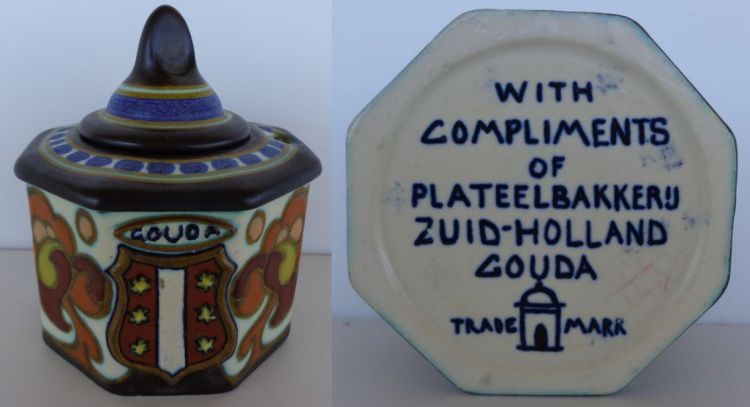The biggest Gouda pottery of them all was
called the PZH, which stands for Plateelbakkerij Zuid Holland.
The PZH produced pottery from as early as 1898 until 1965, during that
time much was produced, so much variety in models and decors that as yet
it is not fully catalogued, and new finds still emerge. The mark above is
found on the oldest of their pottery, the 2 E-letters, (one is reversed)
are thought to be those of one of the first owners, i.e. Egbert Estie. The
2 EE-s were not part of the mark for long at all.
In Holland this pottery (and others) are often referred to as a factories;
this is because of the huge size of the enterprise, e.g. in the 1920's
alone the PZH-"factory" employed hundreds of people.
The marks on the pottery from the PZH change over time, but what always
seems to be there is the little house. This is a simplyfication of the
"Lazarus-poort" (the Lazarus Gate). It stands for a building in the town
of Gouda that dates back to 1609 where they assisted people who suffered
from leprosy.
The mark on the inkwell is from the 1920's, it was presumably made for
advertising purposes, it clearly shows that the "little house" is their
trademark. The coat of arms as part of the decor is actually found on the
back of the Lazarus gate itself in Gouda.
The text on the mark is in English, this probably means that they tried to
promote their product overseas.
Initially they just produced High glazed, glossy pottery, but in the mid
1910's that changed to a matte glazed product (as seen above), it is
especially this type of pottery that gave Gouda pottery its name, the only
downside might have been that is was very labour intensive to make because
of the extra glazing and firing required.
For a bit more about the manufacturing process, click
HERE .


